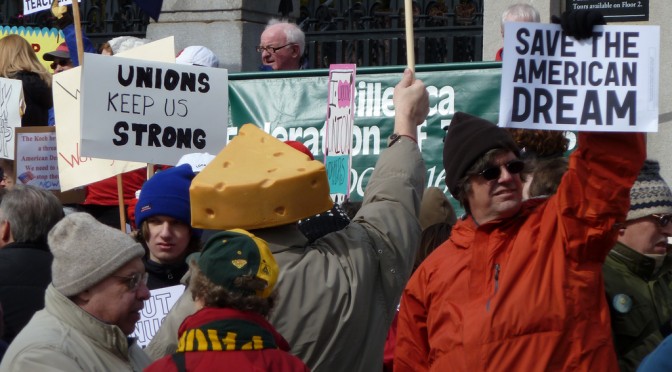Joshua Freeman is a professor of Labor History at The Murphy Institute. This article was originally published in The Nation.
The five-to-four Supreme Court decision in Harris v. Quinn is a blow to organized labor, a movement that in recent decades has suffered one blow after another, with victories few and far between. But it is not as devastating as many unionists feared. The National Right to Work Legal Defense Foundation hoped to use this case involving Illinois homecare aides to overturn the 1977 ruling in Abood v. Detroit Board of Education, the landmark Supreme Court decision which found it constitutional to require public employees who choose not to join a union to pay an “agency fee” to cover the costs of representing them. The majority opinion, written by Justice Samuel Alito, took lots of potshots at Abood, but did not overturn it. Nonetheless, it ruled the agency fee illegal in this case, deeming the home aides involved not “full-fledged public employees” because under Illinois law they are jointly employed by the state and the individual clients they care for.
For the unions that represent home healthcare workers and childcare workers in California, Oregon, New York, Illinois and other states where government agencies act jointly with individual clients as employers, Harris will be a major setback. Past experience shows that when unions lose the right to collect fees from all workers, whether or not they belong to the organization, a large minority stops paying, which means fewer funds to negotiate contracts, fight for worker interests and further organize. Harris is particularly painful because it threatens the gains labor has made among a workforce largely made up of women, non-whites and immigrants, groups seen by many activists as the future of the movement. But it is nowhere nearly the disaster that would have occurred if Abood had been overturned, drastically reducing the resources of all public employee unions. With over half of all unionists now in government employment, the stakes will be very high if a future Court revisits Abood, as the conservative justices clearly hope to do.
Public sector workers have always been more vulnerable to legal limits than private sector workers. The irony is that in Harris, the Court decided that the problem was not that the Illinois workers were public employees but that they were not public enough, only partial public employees rather than “full-fledged” public workers. Thus the decision does not flow from the long history of opposition to public sector unionism on the grounds that it impinges on the “sovereignty” of government, as the conservative Republican governor of Massachusetts, Calvin Coolidge, said when he broke the 1919 Boston police strike. Many liberals agreed; Franklin D. Roosevelt wrote that “the process of collective bargaining, as usually understood, cannot be transplanted in the public service.” But in the post–World War II years, the struggles of public workers and the enlarged role of unionism in American life led to a broader acceptance of public sector collective bargaining. It remains strong enough that even the most conservative justices did not want to confront it head on.
Instead, Harris is an extension of a different tradition in American labor law, the denial of rights to workers in industries dominated by female and non-white workers. Far from universal, the major New Deal labor laws—the National Labor Relations Act, the Social Security Act and the Fair Labor Standards Act—explicitly excluded particular occupations, including farm work and domestic labor, which had large numbers of female, African-American and Mexican-American workers. While some racially and sexually biased exclusions were later eliminated, Harris effectively extends this history of discrimination.
One of the arguments that legislators and the Supreme Court employed over the decades to support the union shop and agency fee, in spite of their coercive nature, was to claim that they are necessary for the state interest in maintaining labor peace. Such proclamations generally came at moments of labor upsurge—strikes, organizing drives, violent industrial clashes. Collective bargaining and a steady flow of dues to support bureaucratized labor organizations were seen as a way of channeling potentially explosive discontent into the machinery of orderly dispute resolution. In Harris, the Court said exclusive representation without an agency fee is enough to do the trick, forcing the affected SEIU local to represent all the Illinois workers, members and non-members alike, with what no doubt will be diminished funding. Perhaps the Court is right and peace will reign. But labor militancy is a funny thing, popping up at unexpected times and in unexpected places. We have seen tired, middle-aged, non-white women set off social revolutions before—think Rosa Parks or Fannie Lou Hamer. It may happen again.
<a href="http://Photo by via flickr (CC-BY).” target=”_blank”>Photo by sushiesque via flickr (CC-BY-NC).



